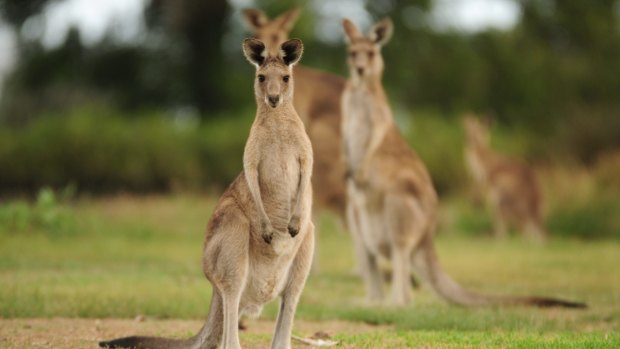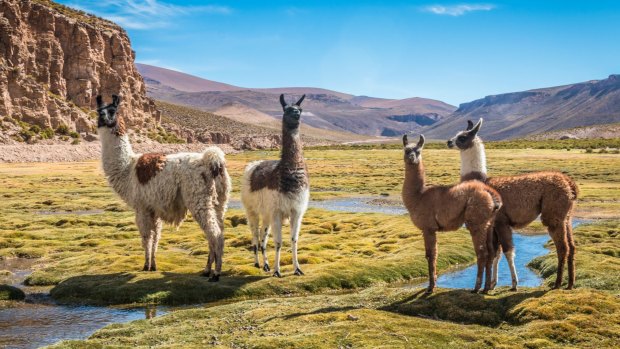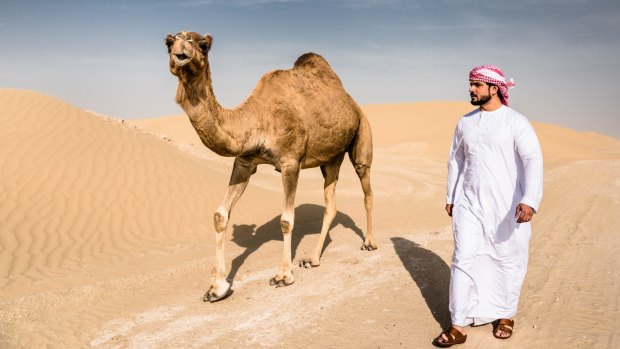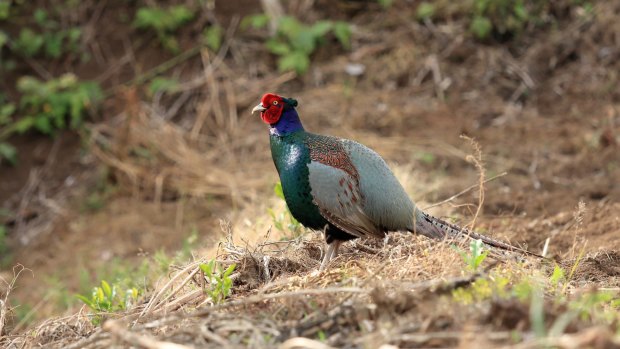This was published 3 years ago
US kangaroo product ban: Other countries that eat their national animals:
By Justin Meneguzzi

There is a push in the US to ban all kangaroo products, including meat and leather.Credit: iStock
American politicians are hopping mad in the wake of an animal rights campaign directed at saving Australia's national icon, the kangaroo.
The campaign, developed by the Center For A Humane Economy and titled "kangaroos are not shoes", aims to pressure global brands like Nike, Adidas and Puma to stop using kangaroo leather, and impose steep penalties on anyone importing kangaroo meat into the US.
The organisation asks "why kill the beloved Australian icon? Americans protect bald eagles. New Zealand protects kiwi birds. China protects giant pandas."
But eating our national animal isn't unique to Australia. Setting aside debates on wildlife conservation, we're just one of the nearly 200 countries that eat their national icons. We've even doubled up and added emu to our menus too. Rather than rush to judgement, eating these animals should be seen an opportunity to delve into the country's unique culinary history.
Tuck in your napkins, here are six more countries that also eat their national animals.
Finland – Brown bear
Equally feared and revered, the brown bear holds a special place in Finnish culture and is recognised as the fierce ruler of the country's boreal forests. Bear meat is considered a traditional food, but hunting is tightly regulated to help protect their numbers in the wild, making it an expensive dish.
If you have cash to burn, you can splurge on bear steaks, bear burgers served on rye bread, or for a special delicacy, two great paws cooked in goose fat (with a price tag pushing past 130 euros). If you're strolling through Helsinki's central Kauppatori Market Hall, you'll also come across neatly stacked cans of bear meat.
Bolivia – Llama

Credit: iStock
Bolivianos have a big appetite for their cuddly national emblem. Llama was once considered a poor person's protein, relegated to street stalls as marinated and fried strips of meat or served in a spicy stew, but in the last decade it has had a renaissance.
Today, llama meat is touted as a healthier, leaner alternative to beef and is a staple in La Paz's high-end restaurants, thinly sliced as carpaccio or served alongside quinoa, another of Bolivia's in-demand staples. Llama meat is also dried out to make charque, a type of jerky, that makes a filling road trip snack when driving out to see Bolivia's high plains.
Saudi Arabia – Camel

Credit: iStock
Saudi Arabians used to rely on their stalwart 'ships of the desert' as a form of transport, but rapid modernisation means the camel has started to appear more on food truck menus instead. Typically, camel steaks are served with rice and vegetables, but the lean meat is increasingly finding its way into a broader range of dishes – like camel burgers and Bolognese sauces, and even into harees, a type of Middle-Eastern porridge. Baby camel (hashi), which can be eaten as fried cubes of meat or scattered across pizza, is also popular thanks to its tenderness. During Ramadan, some families will buy a whole camel and share it between multiple households.
France – Rooster
For the French, the rooster represents bravery, boldness, and a hearty dinner. Originally the bird was used by Romans to mock the French, who were historically referred to as the Gauls, a word which shared a Latin root that loosely translated to rooster. Not to be bested by the Romans, the French eventually adopted the rooster as their national symbol and turned into one of their most iconic dishes, coq au vin – a rooster slow-braised in red wine and mushrooms and served with mashed potatoes.
South Africa – Springbok
It might seem jarring to go from observing a springbok on a wildlife safari to then finding one on the end of your fork, but the rugby icon is a common cuisine in South Africa. Springboks are favoured by local farmers because they require less grass and are less destructive to the environment, with many people comparing the taste of their meat to veal.
In high-end restaurants you'll find springbok meat served up in curries, slow cooked in stews or simply as a seared steak. The country's famous biltong, marinated and air-dried strips of meat, is also made from springbok too.
Japan – Green pheasant

Credit: iStock
While we typically think of pork, chicken and beef as staples of Japanese food, some of the more mountainous regions have a longstanding tradition of hunting wild game – including green pheasant, Japan's national bird. It's not uncommon to find the noble bird on dinner tables in the Nagano prefecture during hunting season, served steaming in a sukiyaki hotpot or alongside soba noodles.
In recent years, Japanese restaurants have seen a resurgence in cooking traditional game, experimenting with new ways of cooking pheasant, such as crumbed and fried katsu or grilled on a teppan (hot plate).
Sign up for the Traveller Deals newsletter
Get exclusive travel deals delivered straight to your inbox. Sign up now.